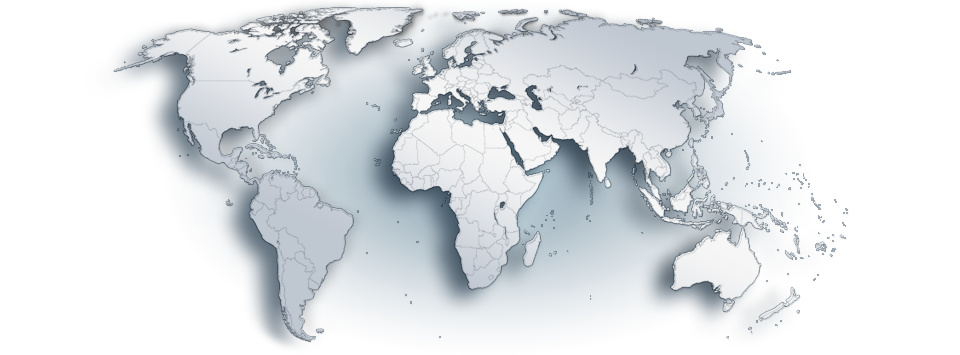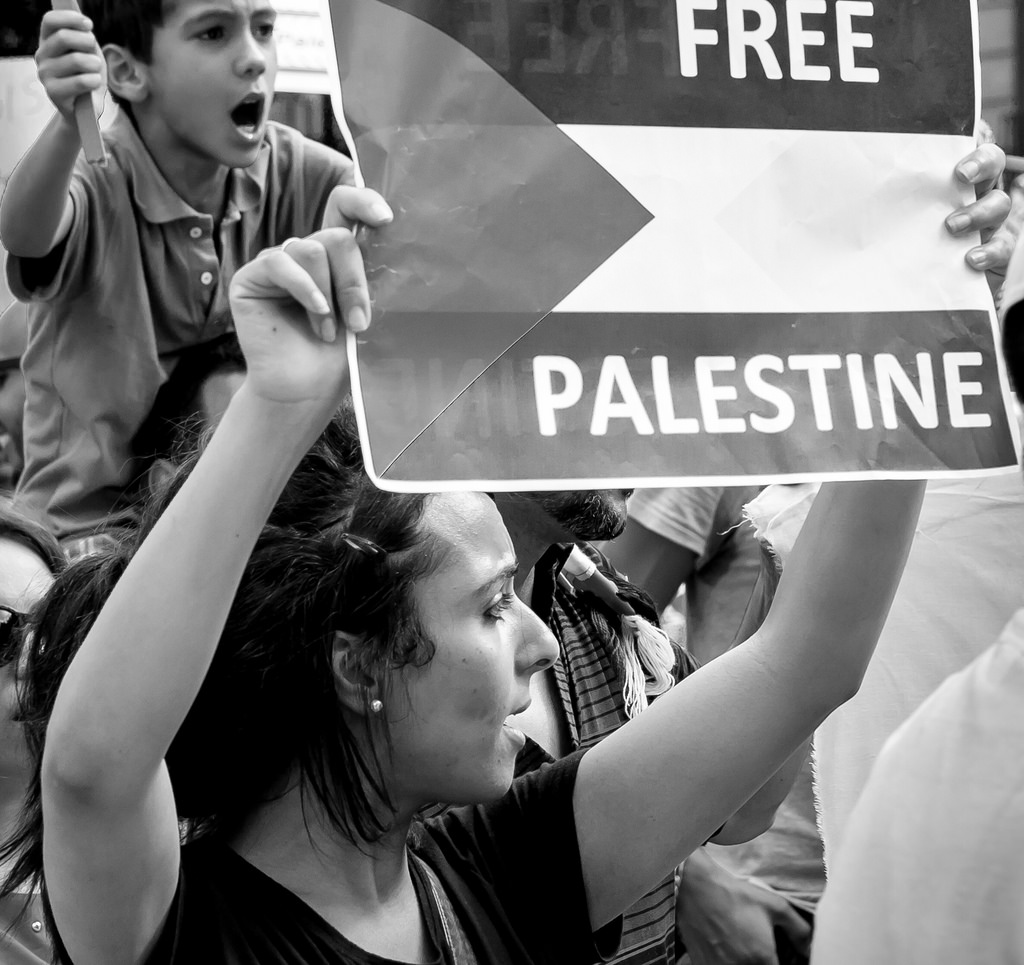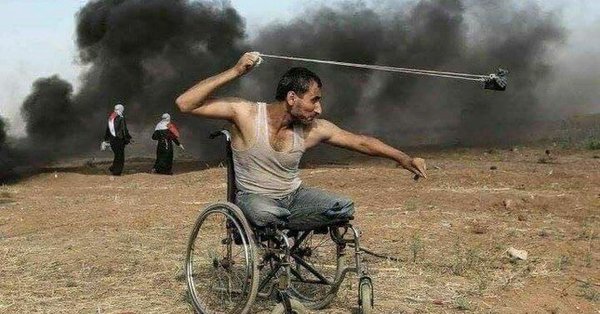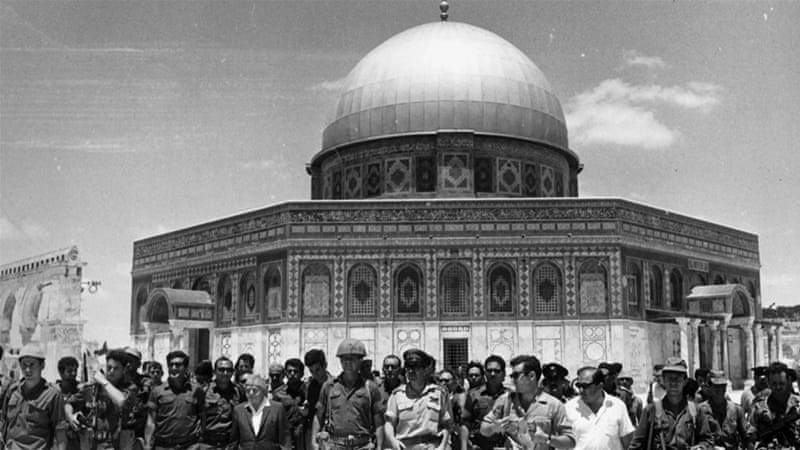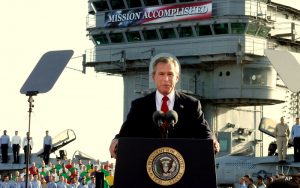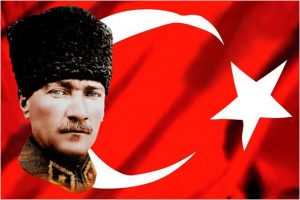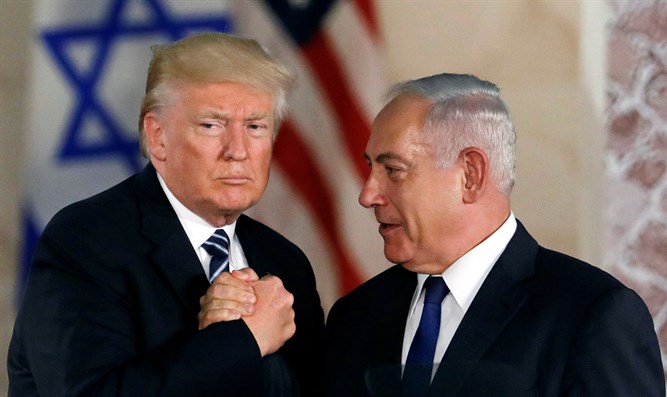
Views: 6081
The Deal of the Century proposed by acting US President Donald Trump once again opened a Pandora Box of the Israeli-Palestinian relations in the Middle East.[1] It is very rational to predict that the Palestinian answer to the Deal of the Century is going to be in the form of intifada’s uprisings which can return back the region for several decades back in the past. Therefore, it is worth to remind ourselves about the main causes and timeline of the Isreali-Palestinian conflict.
What is conflict about?
The Zionist Israeli-Arab Palestinian conflict today is one of if not the most significant global security problems to be dealt with. However, this conflict is historically not much old as it is a pretty modern issue, dating, in fact, since the First Zionist Congress in 1897. The focal question is: What is conflict about? In other words: What are those two different groups are fighting for?
At a first glance, it can be understood that behind the conflict reasons is a confession as those two peoples are of different denominations: the Jews are predominantly Judaists while the Palestinian predominant confession is Islam but includes and Christians and Druze. However, the obvious religious differences are not the fundamental cause of the struggle. In fact, the conflict started a century ago and continued to be strife for the land.
Palestine, the land claimed by both sides was known under this term in international relations from 1918 till 1948. Moreover, the same term was applied by Islam, Christianity, and Judaism to designate a Holy Land. However, as a consequence of the war from 1948 to 1948 between the Arabs and Israel, this land (some 10.000 sq. miles) became divided into three parts: 1) Israel; 2) the West Bank; and the Gaza Strip. Both groups have a different background in claiming this land:
- The Jewish claims to Palestine are founded on the Biblical promise to Abraham and all his descendants. The historical foundations of such claims are based on the fact that on the territory of Palestine have been established the ancient kingdoms of the Jews: Israel and Judea. Politically, this historical claim is backed by the need of the Jews for the nation-state to get rid of the European anti-Semitism especially after the WWII-holocaust.
- Arab Palestinians are claiming the same land-based on their continuous living in Palestine for hundreds of years and on the fact that they were demographic majority until 1948. In addition, they reject the confessional-ideological notion of the Zionist Jews that the Jewish kingdoms based on the Old Testament can constitute any rational and moral/scientific foundations to be used for acceptable modern claim especially taking into consideration that the Jews left Palestine after the occupation of the Roman Empire in the 1st century AD. However, the Arab Palestinians also use the arguments from the Bible and, therefore, claim that Abraham’s son Ishmael is the forefather of the Arabs and that God promised the Holy Land to all children of Abraham what simply means and to the Arabs. But the crucial issue from the Arab Palestinian viewpoint is that they cannot forget Palestine as a matter of compensation for the holocaust against the Jews done in Europe.
The Palestinians and diaspora
The term Palestinians from the very political-historical standpoint today refers to those people of Palestine whose historical roots are traced to this land as defined by the British Mandate’s borders being the Arabs of Christian, Muslim or Druze denominations. It is estimated that today there are some 5.6 million Palestinians living within the British Mandate Palestine’s frontiers which is now divided into three parts: 1) The State of Zionist Israel; 2) The territory of the West Bank; and 3) the Gaza Strip. The last two were occupied by Israel during The 1967 Six Days War. It is as well as claimed that today there are some 1.5 million of the Palestinians living as the citizens of Israel. Therefore, the Palestinians compose around 20% of the Israeli population. In addition, some 2.6 million Palestinians live in the West Bank including and 200.000 living in East Jerusalem and around 1.6 million living in the Gaza Strip. However, there are around 5.6 million Palestinian people who are living in the diaspora, outside Palestine mainly in Lebanon, Syria, and Jordan.
Among all Palestinian diaspora groups, the largest one (some 2.7 million) lives in Jordan. Many of them still live in those refugee camps established in 1949 while others became town dwellers. Some Palestinian refugees took refuge in Saudi Arabia or in other Arab Gulf states while others moved to other countries of the Middle East or the world. Among all Arab states, only Jordan granted citizenship to those Palestinians living there.
Nevertheless, the situation of the Palestinian refugees in South Lebanon is particularly disastrous as many Lebanese are blaming them for the civil war that ruined the country in 1975−1991 and, therefore, demand that all Lebanese Palestinians have to be resettled somewhere else as a precondition to re-install peace in the country. Especially the Lebanese Christians are very anxious to rid the country of the Muslim Palestinians as they fear that the Palestinians are undermining the religious balance of Lebanon.
Israeli Palestinians
When Israel was proclaimed as an independent state in May 1948, there were only some 150.000 Arab Palestinians within its borders. On one hand, all of them were granted the citizenship of Israel what means automatically and with the right to vote.[2] However, on the other hand, they de facto have been second-class citizens (i.e. the ethnic and confessional minority) for the very reason as Israel was officially defined as both a Jewish state and the state of the Jewish people.[3] As the Palestinians are not the Jews (regardless of the fact that both are the Semites).[4] Most of those Israeli Palestinians have been subjected until 1966 to the military authority which restricted their free movement followed with other civic rights like to work, to free speech, to the association, etc. The Palestinians were not allowed to be the full members of the Israeli trade union federation (the Histadrut) up to 1965. But the focal problem was that the State of Israel confiscated around 40% of Palestinian land for the purpose to be used for development projects.[5] However, from the majority of such state’s development projects mostly exactly Israeli Jews profited but not Israeli Arab Palestinians.
One of the basic claims by the Arab Palestinians in Israel is that all Israeli authorities are systematically discriminating them by allocating very fewer resources for health care, education, public works, economic development or resources for municipal governmental authorities to the Arab-populated land. Another general claim is that Israeli Palestinians are as well as systematically discriminated from the right to preserve and develop their cultural, national, and political identity. As a matter of fact, Israeli Palestinians have been up to 1967 totally isolated from the Arab world but as well as very much understood by other Arabs as traitors who left to live in oppressive Zionist anti-Arab State of Israel. However, since The 1967 Six-Day War, the majority of Israeli Palestinians became more self-confident in their Arab Palestinian national identity. During the last some 20 years, Israel prohibited to commemorate the nakba that is either the expulsion or flight of at least 500.000 Arab Palestinians in 1948 during the first Arab-Israeli war.
The meaning of intifada
The Arabic word intifada means “shaking off” but in the political language as a term, it means “uprising”. More precisely, this term refers to the two Palestinian uprisings on both territories of the West Bank and the Gaza Strip. These two territories have been occupied by Israel during The 1967 Six-Day War between Israel and the coalition of the Arab states in the region of the Middle East.[6] Both intifadas lasted from 1987 to 2005.[7]
The First Intifada
The First Intifada was, in fact, the spontaneous uprising in 1987 which lasted until 1993. It began as a revolt of the Palestinian youth throwing stones against the forces of the Israeli occupation, but soon became a widespread movement involving civil disobedience with periodic large-scale demonstrations supported by commercial strikes. Usually, it is considered that the beginning of the First Intifada was a response to:
- The realization that the Palestinian Question in the Middle East together with the Arab-Israeli conflict was not seriously taken into consideration by the Governments of Arab states.
- The fact that the Palestinians in the so-called Occupied Territories (after The 1967 Six-Day War) should have to take matters into their own hands.
The West Bank’s and Gaza’s Palestinians started an uprising in December 1987 against the policy of occupation run by the Israeli Government. It has to be clearly noticed that the First Intifada was not either started or directed by the leadership of the Palestine Liberation Organization (the PLO) which was at that time located in Tunis.[8] It was actually popular mobilization organized by local Palestinian organizations and institutions in Palestine. The movement very quickly became a massive involving several hundreds of thousands of Palestinians of whom many did not participate before into the previous resistance actions and many of them have been teenagers and even kids. The response of the Israeli security forces was brutal repression of the whole Palestinian population of the Occupied Territories.
During the first years of the uprising, the movement chose similar form of the fight of Mahatma Gandhi (1869−1948) in India against British colonial authorities: civil disobedience, massive demonstrations, general strikes, refusal to pay taxis, boycotts of Israeli products, writing political graffiti or establishment of underground the so-called “freedom schools”.[9] Later, the uprising took certain forms of “terrorist” actions like stone-throwing, Molotov cocktails or putting the barricades to stop Israeli military forces.
The actions of the First Intifada have been organized within the framework of the United National Leadership of the Uprising which embraced several popular committees. The fact was that Intifada succeeded to attract up to that time the biggest attention by the international community especially of those dealing with human and minority rights to the situation of Palestinians living in the Gaza Strip and the West Bank. The Israeli occupation of these territories became criticized as never since 1967.[10]
Israeli Defence Minister Yitzhak Rabin’s strategy to deal with Intifada was to use military force and security power. In the years from 1987 to 1991, according to Palestinian sources, the Israeli army murdered over 1.000 Palestinians. Among them there were some 200 teenagers under the age of 16. Army’s actions included and massive arrests resulted that during the First Intifada, Israel had the highest number of prisoners per capita in the world. Due to such brutal actions, by 1990 most of the Palestinian leaders of the Intifada have been in prison and, therefore, the uprising lost its cohesive force but, nevertheless, it continued until 1993.
The negotiations, the Washington talks and the Oslo Accords
During the First Gulf War in 1991, the Palestinians and their national organization the PLO opposed the US-led attack on Iraq. After this war, the PLO became diplomatically isolated and Kuwait and Saudi Arabia stopped to finance it and, therefore, bringing the PLO to the financial and political crisis.
The US’ administration after the First Gulf War decided to politically make firmer its position in the Middle East by diplomatically promoting Washington’s crucial role in the process of resolution of regional cancer – the Arab-Israeli conflict. It was organized multilateral conference in Madrid in October 1991 attended by on one side the Palestinian representatives and the representatives of the Arab states and on other side representatives of Israel led by PM Yitzhak Shamir who was practically forced to participate in the conference under the pressure by the US’ President George H. W. Bush (Bush Senior).[11] However, behind Israeli delegation it was, in fact, Washington dictating Israeli conditions to negotiate. More precisely, Y. Shamir’s required that: 1) the PLO has to be excluded from the conference (as considered to be a terrorist organization); and 2) the Palestinians would not “directly” raise the question of independence and statehood for Palestine.
The talks after Madrid have been continued in Washington where the Palestinian delegation was composed by negotiators from the Occupied Territories. However, the representatives of East Jerusalem were not allowed to take participation in the negotiations by Israel on the grounds that East Jerusalem is part of the State of Israel. Formally, the PLO’s representatives were excluded from the conference but in the reality, its political leaders regularly consulted with and advised the official Palestinian delegation but a little progress was achieved through the process of negotiations. According to Israeli PM Y. Shamir, the focal aim of the Israeli delegation and negotiation policy was to drug out Washington’s talks for some 10 years as after that the Israeli annexation of the West Bank would be simply de facto accomplished fact for the international community.
Very soon, in 1992, immediately when Yitzhak Rabin became a new Israeli PM, human rights of Palestinians in the Occupied Territories (the Gaza Strip and the West Bank) tremendously became worse – the fact which dramatically undermined the legitimacy of the Palestinian delegation to the Washington talks and prompted the resignation of several delegates. There were several reasons for the failure of Washington’s talks as human rights violation and economic declination in the Occupied Territories, growth of radical Islamism as a challenge to the PLO, violent actions against Israeli security forces and civilians by Hamas and Islamic Jihad and the first suicide bombing (in 1993).[12]
There were two chief reasons for the Israeli PM Y. Rabin to continue the negotiations with the Palestinian representatives: 1) The real security threat for Israel of radical Islam and Islamic fundamentalists; and 2) The stalemate in the Washington talks. Those two factors as well as contributed to the Y. Rabin’s Government to reverse the traditional Israeli refusal to negotiate with the PLO (at least not directly). As a consequence of such drastically changed political situation, it was Israel to initiate secret talks directly with the Palestinian representatives from the PLO in Oslo, Norway. The talks resulted in the Israeli-PLO’s Declaration of Principles, which was signed in Washington in September 1993. The main points of the declaration were:
- A fact that it was founded on bilateral recognition of Israel and the PLO as legitimate negotiating sides.
- The declaration established that the Israeli forces would withdraw from the Gaza Strip and Jericho.
- The additional withdrawals of Israel from unspecified territories of the West Bank during a five-year interim period were agreed.
- However, the key issues of the Israeli-Palestinian relations have been put aside to be discussed in some final status talks like extent of the land to be ceded by Israel, the status of the city of Jerusalem, the Palestinian refugee problem’s resolution, the nature of the Palestinian entity to be established, the question of the Jewish settlements in the West Bank or water rights.
Between two intifadas
A framework for peace, the Declaration of Principles, was signed by the Israeli and Palestinian political representatives in September 1993 in Washington, but finally, the agreement was not fully realized in the practice. After months of secret negotiations which have been sponsored by the Norwegian Government, between the PLO and Israel, the latter finally recognized the PLO as the legitimate political representative of the Palestinians, while in turn, the PLO recognized Israel as an independent state and renounced the use of violence. From the diplomatic viewpoint, it was fixed by signing the accords at a conference in Washington on September 13th, 1993, which as well as fixed several principles for the national autonomy of the Palestinians (the Gaza−Jericho Agreement).[13] The 1993 Oslo Accords (August−September) set up a negotiating process but without specifying an outcome.[14] During the protracted interim period of the Oslo process, the Israeli Governments of Labour and Likud parties tremendously escalated the Jewish settlement building and land confiscations in the Occupied Territories followed by the construction of bypass roads for the sake to enable the Jewish settlers to travel from their settlements to Israel proper but without need to pass through the Palestinian-settled areas. Such Israeli projects and practice have been properly understood by the Palestinians and the anti-Zionist part of the international community as the creation of the conditions for the final annexation of the Occupied Territories by Israel. The problem was that the 1993 Oslo Accords did not design any mechanism to block such kind of unilateral (Israeli) actions or the violations of the Palestinian human and civil rights within the areas of the Israeli control.
Only in the mid-2000 finally, the Israeli-Palestinian negotiations received the green light. Nevertheless, by that time, the Middle East saw a series of Israeli interim withdrawals which left the Palestinian Authority with either full direct or partial control of approximately 20% of the West Bank and some 65% of the Gaza Strip.[15] However, the Palestinian controlled areas have been surrounded by the Israeli-controlled territory with entry/exit check-points under the control of the Israeli army.
Formally, the final status agreement had to be fixed during the Israeli-Palestinian talks in Camp David, USA when in July 2000, the US’ President Bill Clinton (who a year ago heavily bombed Serbia and Montenegro for 78 days) invited Israeli PM Ehud Barak and the PLO’s leader Yasser Arafat.[16]
However, before the talks, E. Barak proclaimed his “red lines” in several points:
- Israel will not return to its state’s borders existed before the 1967 Six-Day War.
- East Jerusalem with its Jewish inhabitants (at that time some 175.000) will remain under the Israeli administration.
- Israel will annex Jewish settlements in the West Bank (at that time some 180.000).
- Israel will not accept either legal or moral responsibility for the creation of the Palestinian refugee question.
On other hand, the Palestinian representatives required according to the OUN SC’s Resolution 242 and the spirit of the 1993 Oslo Accords (the Declaration of the Principles), Israeli evacuation from the vast majority of the West Bank, East Jerusalem, and the Gaza Strip followed by the Israeli recognition of the independent state of Palestine on those evacuated territories.
During the 2000 Camp David II talks, the Israeli PM E. Barack was extremely strict with the question of East Jerusalem requiring full Israeli sovereignty over it.[17] It became clear that the big difference between two negotiating sides was impossible to be bridged up and, subsequently, the summit finally failed.[18] Therefore, the road to the Second Intifada of the Palestinians against the continued occupation of Palestinian land by Israeli authorities was practically open. Nevertheless, many Israeli Jews understood that they cannot achieve the peace with the Palestinians if they will continue to impose their terms and, as a result, Israel would have to learn to live in the constant conflict with the Palestinians.
The Second Intifada
The Second Intifada started on September 28th, 2000. It is known as the Al-Aqsa Intifada which started when Likud candidate for the Israeli PM Ariel Sharon visited the Al-Aqsa Mosque together with 1.000 armed guards as it was understood by the (Muslim) Palestinians as a direct provocation of the holy site. However, the real reasons for the Second Intifada have been much deeper: 1) The problem of the realization of the peace process initiated by the Oslo Accords; 2) Frustrations and humiliations on daily bases inflicted on the Israeli Palestinians especially within the borders of the Occupied Territories; and 3) Corruption in the Palestinian Authority. As A. Sharon was well-known as a firm advocate of the Israeli annexation of East Jerusalem, his move immediately provoked large Palestinian protests in Jerusalem.[19] As a matter of revenge, the Palestinians tomorrow were throwing rocks and stones at the Jews praying at the Western Wall. Israeli security forces, in turn, stormed the Temple Mount killing some four and wounding around 200 unarmed Palestinian protesters. At the same day, Israeli police killed, in addition, three more Palestinians in Jerusalem.
Naturally, these bloody events provoked mass Palestinian demonstrations and clashes in the West Bank and the Gaza Strip followed soon with widespread solidarity protests and a general strike in Arab and mixed Arab-Jewish towns in Israel when the Israeli police killed 12 unarmed Palestinians as the citizens of Israel.
The Second Intifada was much serious and above all much bloodier in comparison to the First Intifada, but as well as, the Second Intifada was obviously of much more Islamic character than the First Intifada in which Lebanon’s Hezbollah had an influence on it.[20] There were growing exchanges of fire, sniping incidents and clashes between the Jewish settlers and Palestinians in the West Bank, car-bombs, and suicide-bomber attacks in Israeli towns and cities.[21] During the first three weeks of the Second Intifada, the Israeli Security forces shot some million live bullets at unarmed Palestinian protesters that became an example of a conscious escalation in the use of force designed to smash a civil uprising. In some cases, armed policemen of the Palestinian National Authority’s forces, often positioned at the rear of unarmed protesters, returned fire.[22]
The authorities of the State of Israel characterized the Second Intifada as an act of aggression, foreign “armed adversary” or an “armed conflict short of war” and, claimed that Israel had a self-defence right to attack an enemy. Therefore, soon the use of the Israeli military force expanded to include tanks, helicopters, and F-16 fighter planes. The Palestinian National Authority’s posts have been attacked in Ramallah and the Gaza Strip and the Palestinian settlements were exposed to shelling and aerial bombardment. The Israeli forces targeted leaders of both secular and religious Palestinian groups but and all others that it has believed a threat, destroying official buildings of the Palestinian National Authority, and entering the towns with tanks to destroy family houses of those Palestinians who had attacked the Israeli security forces. Eventually, in escalating violence, the autonomous Palestinian towns in the West Bank have been re-occupied by Israel.
Politically, the gap between those two sides was becoming deeper. The Palestinian side, which was led by Y. Arafat required immediate negotiations, but the Israeli Government required that negotiations could begin only when the violence will stop and was unwilling to consider the previous negotiations of Camp David II and the B. Clinton proposals as valid. The Palestinian national leader, Y. Arafat was practically unable to restrain violence without having something positive to offer to the Palestinians from the Israeli Government and, therefore, he soon lost credibility in the eyes of the majority of Palestinians.
The peak of the Palestinian attacks in Israel was a suicide bombing in Netanya on March 27th, 2002 during the Judaist Passover holiday when 30 Jews were killed. This action provoked harsh Israeli retaliation within the military framework of the launched Operation Defensive Shield with full support by Washington,[23] which was a full-scale tank invasion of the West Bank for several weeks under the justification that such offensive was the hot pursuit of terrorist suspects. The Israeli armoured Caterpillar bulldozers razed the part of the Jenin Palestinian refugee camp[24] while tanks ringed the Church of the Nativity in Bethlehem and Israeli army imposed all-day curfews in seven of the West Bank’s eight major towns. A second, shorter tank invasion of the West Bank was launched in June 2002. The Second Intifada lasted from September 2000 to September 2005 and costs 40 billion US$ to the Israeli economy with 1010 killed Israeli Jews among them some 300 soldiers followed by 3.300 killed Palestinians and 55 foreigners (journalist, human rights activists, etc.). For the Islamic militant groups like Hamas, the Second Intifada was a clear victory over the Zionist Israel.[25]
Nevertheless, basically, the Oslo Accords have been buried by the ruling Likud Party of Israel as the party clearly opposed establishing a Palestinian nation-state of making any territorial compromises with the Palestinian side. The Jewish society in Israel reached 40% of those wanting the army to retake land in the possession of the Palestinian National Authority while the hardliners have been requiring the elimination of Y. Arafat.[26] On the other hand, most of the Palestinians, as well as came to reject the Oslo Declaration of Principles and its long process without peace and the creation of the State of Palestine.[27]
Call for the Third (Silent) Intifada
In summer 2004, there was a call by some Palestinian civil activists for a Third Intifada as a response to the event when a Palestinian teenager Mohammed Abu Khdeir was burned alive by Jewish settlers in the occupied West Bank. However, Khdeir was killed in the Jewish response to the kidnapping and killing of three Jewish teenagers from the settlements in the West Bank. The following period of increased violence between Israeli authorities and Jewish settlers in the West Bank and the Palestinians was especially harsh in East Jerusalem and it is considered as the Silent Intifada.
The main issue of Intifadas
Taking into consideration all reasons for the intifadas, the focal issue is, in fact, of are the Palestinians living in the West Bank and the Gaza Strip going to be allowed to self-determine their own destiny within the political-administrative form of autonomy or statehood. Otherwise, these territories are going to be incorporated into the state of Israel especially the West Bank (the Golan Heights are already de facto incorporated). The additional issue to be concerned are the human rights of the Arab Palestinians in the Zionist State of Israel.[28]
Both intifadas made it clear that the status quo after The 1967 Six-Day War was impossible but as well as they shifted the centre of gravity of Israeli-Palestinian relations from the PLO leadership in Tunis to the Palestinian representatives of the Occupied Territories. Palestinian political activists required that the PLO should adopt clear political aims and especially program for the sake to guide Palestinian fight for final national-state independence.
As a matter of response to the First Intifada, the Palestine National Council[29] recognized in Algeria in November 1988 Israel as an independent state, proclaimed an independent State of Palestine on the territories of the West Bank and the Gaza Strip and renounced terrorism as a mean of the political fight. However, the Israeli Government did not respond to these decisions under the umbrella of claiming that nothing essentially was changed and that the PLO is still considered as a terrorist organization. Therefore, Israel cannot negotiate with such an organization. Nevertheless, the focal sponsor of Zionist Israel, the USA, officially recognized that the political approach of the PLO concerning Israel is changed, but in practice Washington nothing did in order to encourage Israeli Government to get rid of its inflexible policy toward the Palestinian Question in general.
Another main issue of the intifadas was political divisions and even violence within the Palestinians. Especially it was quite visible on the relations between several factions of the PLO and Islamic organizations of Hamas and Jihad al-Islami. Such Palestinian Islamic militants are accused of killing over 250 Palestinians who have been accused of the collaboration with the Israeli authorities followed by the killing of 1010 Jews at the same period of time.
 Prof. Dr. Vladislav B. Sotirović
Prof. Dr. Vladislav B. Sotirović
sotirovic1967@gmail.com
© Vladislav B. Sotirović 2020
[1] About the Israeli-Palestinian conflict, see in [Martin Bunton, The Palestinian-Israeli Conflict: A Very Short Introduction, New York: Oxford University Press, 2013].
[2] Nevertheless, in some cases Israeli Central Elections Committee in practice used very politically colored criteria to discriminate against those Arab Palestinians whose political views are understood to be unacceptable especially at the time of the parliamentary elections.
[3] About ideological-political background on the creation of Israel as a nation-state of the Jews, see in [Theodor Herzl, The Jewish State: The Historic Essay that Led to the Creation of the State of Israel, Skyhorse, 2019].
[4] Semitic peoples are supposed to descend from Shem, son of Biblical Noah. Particularly it is assumed for the Jews, Arabs, Ancient World’s Phoenicians, and Assyrians [Alan Isaacs, et al (eds.), A Dictionary of World History, Oxford−New York: Oxford University Press, 2000, 563]. There is a claim that, in fact, present-day Palestinians descended from the Phoenicians and that term Palestinians is corrupted Phoenicians.
[5] Israeli Palestinians are commemorating on March 30th Land Day to protest the continuing confiscation of Arab territories by the Israeli Government. The first protest on this day was in 1976 when the Israeli security forces killed six Palestinians. Since this incident, the Palestinians either in the diaspora or in Israel commemorate this day as a national day.
[6] The 1967 Six-Day War from 5th to 10th June is known in the Arabic world as the June War. The formal reason for this war have been three requests by Egypt to the OUN’ Emergency Force in Sinai: 1) to withdraw their detachments from the Israeli border; 2) the increase of Egyptian military troops on the Sinai Peninsula; and 3) to close the Straits of Tiran in the Gulf of Aqaba for the use by Israeli ships. Three Arab states made a military coalition against Zionist Israel: Egypt, Syria, and Jordan. The 1967 Six-Day War started by the Israeli Minister of Defence General Dayan as a pre-emptive airstrike. However, it was soon followed by Israeli occupation of the Sinai Peninsula, Old Jerusalem, the West Bank, the Gaza Strip, and the Golan Heights during two last days of the war [Guy Laron, The Six-Day War: The Breaking of the Middle East, New Haven−London: Yale University Press, 2017].
[7] Don Peretz, Intifada: The Palestinian Uprising, London−New York: Routledge, 2018.
[8] The Palestine Liberation Organization (the PLO) is both a political and military organization that was created in 1964 for the sake to unite different Arab Palestinian groups to fight Israeli anti-Palestinian policy on the land of Palestine. The PLO became dominated since 1967 by al-Fatah that was led by Yasser Arafat. In 1974, the PLO became recognized by the Arab states as an official political and national representative of all Palestinians. The Israeli military invasion of South Lebanon in 1982 decreased its military power and organization itself. As a consequence, the PLO became reorganized in Tunisia. The organization, however, became split into several extremist-radical groups like the Popular Front for the Liberation of Palestine or the Black September (classic terrorist group) who became responsible for kidnappings, hijackings or murdering within or outside of the Middle East. Yasser Arafat, therefore, persuaded in 1988 the PLO to renounce violence and terrorist acts and its governing council recognized the existence of Israeli state. As a direct consequence of such political move, since 1988, the PLO was accepted by many states as being a Government-in-Exile of Palestine. Yasser Arafat in 1993 acted as a Chair of the Palestinian National Authority administering the territories of the Gaza Strip and the West Bank [Jillian Becker, The PLO: The Rise and Fall of the Palestinian Liberation Organization, Bloomington, IN: AuthorHouse, 2014].
[9] The regular schools were closed by the military authority of Israel as an act of revenge for Intifada.
[10] The Palestinian side claims that during the First Intifada, the Israeli Government runs a secret policy of killing of the Palestinians on the Occupied Territories. Such kind of operations has been done by special units who either presented themselves as Arabs in order to approach and execute the victims or by snipers who have been killing from a distance.
[11] The Madrid Peace Process was launched by the US’ President Bush and the Soviet leader M. Gorbachev.
[12] It is a matter of very fact that before the First Intifada started, Israel enabled further development of the Islamic groups among the Palestinians believing to create in such a way opposition to the PLO’s secular nationalism and consequently to divide Palestinians in the Occupied Territories. However, since 1993, it became obvious that Islamic fundamentalist groups are more dangerous for Israel than the PLO. About Hamas, see in [Matthew Levitt, Hamas: Politics, Charity, and Terrorism in the Service of Jihad, New Haven−London: Yale University Press, 2006].
[13] The Gaza−Jericho Agreement (September 13th, 1993) was a follow-up treaty to the 1993 Oslo Accords, in which the details of the Palestinian National Autonomy were set up. The agreement provided for the creation of the autonomy of the Palestinians in the Gaza Strip and the West Bank after the transition time of no longer than five years. It contained a detailed plan for the withdrawal of the Israeli security troops from Jericho and the Gaza Strip. These two areas became first two to be given to the Palestinian self-authority. Furthermore, during the next nine months, the Israeli troops were obliged to withdraw from all areas of the Arab settlements in the West Bank, where control would be exercised by an elected Palestinian Council. It was agreed that after a maximum of three years of a transitional period, the negotiations had to start about the status of East Jerusalem. Nevertheless, the practical realization of the 1993 Gaza−Jericho Agreement was prevented by two events: 1) the assassination of the Israeli PM Y. Rabin; and 2) election of new PM Benjamin Netanyahu, who simply refused to withdraw the Israeli army from any territory which has been at that time controlled by Israel [Edward W. Said, Peace and its Discontents: Gaza−Jericho, 1993−1995, Trafalgar Square, 1995].
[14] Dennis J. Deeb, The Collapse of Middle East Peace: The Rise & Fall of the Oslo Peace Accords, Lincoln, NE: iUniverse, 2003; Petter Bauck, Mohammed Omer (eds.), The Oslo Accords 1993−2013: A Critical Assessment, Cairo−New York: The American University in Cairo Press, 2013.
[15] The Gaza Strip is a narrow portion of the land of the East Mediterranean coast around the town of Gaza which was part of the former British Mandate of Palestine (1920−1947). In 1947, the OUN gave it to the Arabs, whereupon the Gaza Strip became occupied by the army of Egypt. However, the Israeli army attacked the Gaza Strip in 1955 with the killing of 36 Egyptian soldiers. During the 1956 Suez Crisis, the strip was occupied by Israel but was returned to Egypt next year. The Gaza Strip was once again occupied by the army of Israel during the short Six-Day War in 1967. In 1994, it became one of the first lands to receive the Palestinian national self-rule under Yasser Arafat (the Palestinian National Authority) [Nathan Shachar, The Gaza Strip: Its History and Politics from the Pharaohs to the Israeli Invasion of 2009, Brighton−Chicago−Toronto: Sussex Academic Press, 2010; Sara Roy, The Gaza Strip: The Political Economy of De-Development, Institute for Palestinian Studies, 2016].
[16] Yasser Arafat (1929−2004) took participation in the Arab war against Israeli independence (the First 1948−1949 Arab-Israeli War). He fought in the 1956 Suez Crisis in the Egyptian army. In Kuwait, he co-founded and led the al-Fatah movement, which from 1969 became the leading political movement within the PLO. He became a President of the PLO’s Executive Council in 1969. Under his leadership, the PLO became expelled from Jordan, Beirut, Damascus, Tripoli, and Lebanon. In 1990 Y. Arafat became isolated in his political support for Saddam Hussein during the First Gulf War. His renunciation of violence in 1988, ultimately convinced Israeli Government that he was the Palestinian best negotiator of achieving peace. He negotiated both the Oslo Accords and the Gaza-Jericho Agreement despite strong opposition by much more radical Islamic groups of Hamas and Hezbollah. In 1996, he became elected President of newly established the Palestinian National Authority. Y. Arafat agreed to the 1998 Wye Accords, but these were never applied in full. Israeli PM Ariel Sharon put Y. Arafat under house arrest in March 2002, in an attempt to crush the Second Intifada. Nevertheless, Y. Arafat till his death in 2004 remained the ultimate source of political authority inside Palestine [Alan Hart, Arafat: A Political Biography, Bloomington−Indianapolis: Indiana University Press, 1989; Jonathan Schanzer, Yasser Arafat, Mahmoud Abbas, and the Unmaking of the Palestinian State of Failure, New York: St. Martin’s Press, 2013].
[17] About the history of Jerusalem, see in [Simon Sebag Montefiore, Jerusalem: The Biography, London: Weidenfeld & Nicolson, 2011].
[18] Bruce Maddy-Weitzman, The Camp David Summit – What Went Wrong? Sussex Academic Press, 2005.
[19] Giedrius Drukteinis (sudarytojas), Izraelis žydų valstybė, Vilnius: Sofoklis, 2017, 748‒750.
[20] Antoine Sfeir (ed.), The Columbia World Dictionary of Islamism, New York: Columbia University Press, 2007, 277. In the following years after 2000, Hezbollah flags have been displayed in the Haram al-Sherif, on the Aqsa Mosque, and the Dome of the Rock. However, such practice was not recorded before the Second Intifada. Hezbollah means literally the Party of God and it is conservative faction identified with the 1979 Islamic Revolution in Iran, rather than with the state. Hezbollah’s activists and fighters believe they fight only for the survival of Islam.
[21] Ahron Bregman, A History of Israel, London‒New York: Palgrave Macmillan, 2003, 281. There were over 150 attacks from 2000 to 2005 compared to 22 incidents from 1993 to 1999 by the Islamist opponents (Hamas and Islamic Jihad) of the Oslo Accords.
[22] According to the Israeli sources, during the Second Intifada, there were 208 killed Israeli security forces’ members followed by 1387 wounded [Alfonsas Eidintas, Donatas, Eidintas, Žydai, Izraelis ir palestiniečiai, Vilnius: Mokslo ir enciklopedijų leidybos institutas, 2007, 241].
[23] About the US’ friendship with Israel and the Jewish lobby in the USA, see in [Alfonsas Eidintas, Donatas, Eidintas, Žydai, Izraelis ir palestiniečiai, Vilnius: Mokslo ir enciklopedijų leidybos institutas, 2007, 247‒299].
[24] Similarly to the case in Israel, Kosovo’s Albanians used the bulldozers to destroy Serbian graveyards since June 1999 while Serbian Orthodox churches are attacked almost every day by Muslim Albanians.
[25] Giedrius Drukteinis (sudarytojas), Izraelis žydų valstybė, Vilnius: Sofoklis, 2017, 778.
[26] Ahron Bregman, A History of Israel, London‒New York: Palgrave Macmillan, 2003, 286.
[27] About the historical relations between the Jews and the Palestinians in Israel, see in [Alfonsas Eidintas, Donatas, Eidintas, Žydai, Izraelis ir palestiniečiai, Vilnius: Mokslo ir enciklopedijų leidybos institutas, 2007].
[28] Human rights are principles concerning provisions fixed by the post-WWII international human rights agreements such as the Universal Declaration of Human Rights, the International Convention on Civil and Political Rights or the OUN’s Resolution on the Elimination of Intolerance Based on Religion or Belief. There are two focal issues of the meaning of human rights which are clearly identified in Article 2 of the OUN’s Resolution on Intolerance:
- No one shall be subject to discrimination by any State… on grounds of religion or other beliefs.
- The expression “intolerance and discrimination based on religion and belief” means any distinction, exclusion, restriction or preference based on religion or belief and having as its purpose or as its effect nullification or impairment of the recognition, enjoyment or exercise of human rights and fundamental freedoms on an equal basis [Daniel Moeckli, Sangeeta Shah, Sandesh Sivakumaran (eds.), International Human Rights Law, Oxford−New York: Oxford University Press, 2014].
[29] The Palestinian National Council was the PLO’s leading political body.
FOLLOW US ON OUR SOCIAL PLATFORMS